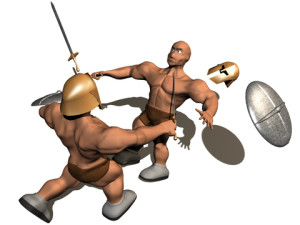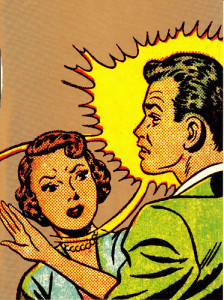 Scenes that are Difficult to Write
Scenes that are Difficult to Write
Where will you find the wildest actions scenes in fiction genre? Usually in the plot-driven stories. At least, action in the sense with which we’re most familiar: bombs going off; fists flying; people wiping out the bad guys; danger lurking at every turn; and so on. The ripsnorters.
But for a novelist, action is very much present in the character-driven story line as well. Perhaps they’re not quite as dramatic and earth-shattering, but they’re there. Many beginning novelists will confess that they believe actions scenes to be the more difficult ones to write. Because this is true, it’s important for all fiction authors to:
- Recognize actions scenes
- Use action scenes in a deliberate, purposeful manner
- Place action scenes in strategic positions
- Know how to pace actions scenes
1. Recognize Actions Scenes
The first step in writing believable, effective action scenes is to recognize them. Be aware of the difference between the action scenes and the narrative, or scene sequels, which are the aftermaths and forerunners of specific action. Each is handled differently
2. Use Action Scenes in a Deliberate, Purposeful Manner
What is the purpose of action scenes? Action is generally used to channel built-up tension. Or possibly to release tension. As the plot builds, the pressure builds until there is an explosion of sorts. Readers expect such scenes to lead to something – something that will advance the plot. This is why awareness is crucial when plotting. You don’t want to disappoint the reader by setting up an action scene that fizzles out and goes nowhere.
3.Place Action Scenes in Strategic Positions
Never forget that nothing in plot construction is random. (See the previous blog post that discusses this: Creating Patterns as a Novelist Part II) As the plot architect, the plot builder, the plot designer, you are the one who decides where each action scene best fits. You decide where they will affect the most favorable reader response.
Some novels open with the ripsnorting, slam-bang scene. That technique is certainly a good hook, but it’s advisable to try two or three different openings to make sure the action scene is the best choice.
Not every scene will call for action or the whole plot will border on overkill. This is why pacing is important.
4. Know How To Pace Actions Scenes
There is a sense of immediacy in an action scene. These will be sections where lean and spare will be the rule. Cut out clutter and unnecessary repetition. Strong action verbs work well here.
This is where show don’t tell comes to the forefront. It’s so much easier to say that Constance hauled off and slapped Reginald across the face  than to describe the play-by-play. But stop and ask: what will the reader prefer?
than to describe the play-by-play. But stop and ask: what will the reader prefer?
Picture the entire scene in your mind’s eye first. See it happening in your vivid imagination. No need to weave in character’s inner thoughts or emotions at this point. There’s no room for prolonged thoughts. It’s not the time for Constance to think how great it felt to give Reginald a shiner. Save that for later. If a swiftly-moving scene breaks for inner dialogue, it can prove to be a frustration for your reader who wants the action to keep moving.
Once you play the scene over in your mind, now quickly write it out, describing what you saw.
Summing Up
As with any other facet of novel writing, creating believable actions scenes will get easier with practice. We novelists are on a continual journey to hone and perfect our craft — to enhance our story-writing skills. Learning how to write strategic action scenes is part of that skill level. Never stop learning.

Photo Credits: © Farsh | Dreamstime.com

Coming Soon
The first two titles in the Norma Jean Lutz Classic Collection will be available in print form.
Flower in the Hills and Tiger Beetle at Kendallwood will soon be in bound copies.
Watch for upcoming announcements.


![]()

